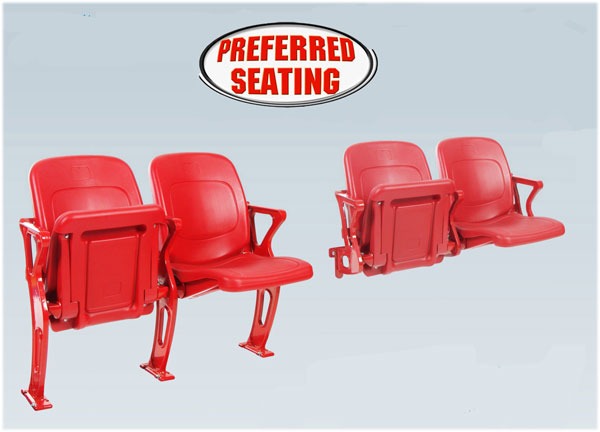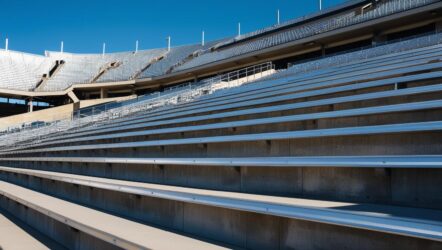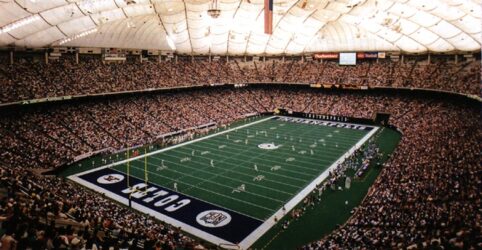The Science Behind Stadium Seating: Enhancing Comfort and Visibility in Arenas
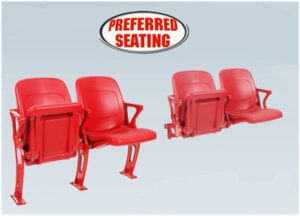 Stadium seating is more than just a place to sit; it’s a carefully designed system that incorporates scientific principles to enhance comfort and visibility for spectators. The arrangement and configuration of seats, as well as the use of ergonomic design and sightline optimization, play crucial roles in creating an enjoyable viewing experience. In this article, we’ll dive into the science behind arena seating exploring how it enhances both comfort and visibility for spectators.
Stadium seating is more than just a place to sit; it’s a carefully designed system that incorporates scientific principles to enhance comfort and visibility for spectators. The arrangement and configuration of seats, as well as the use of ergonomic design and sightline optimization, play crucial roles in creating an enjoyable viewing experience. In this article, we’ll dive into the science behind arena seating exploring how it enhances both comfort and visibility for spectators.
Ergonomics and Seating Design
Discover how ergonomic principles are applied to stadium seating design. From seat contours and padding to lumbar support and armrest placement, ergonomic considerations ensure that seats are comfortable for extended periods, reducing strain and fatigue on the body.
Sightline Optimization
Explore the science of sightlines and how they are optimized in arena seating arrangements. Learn about the calculations and techniques used to ensure unobstructed views from every seat, considering factors such as seat height, rake angle, and incline to minimize visual obstructions and provide clear sightlines to the event.
Acoustics and Sound Distribution
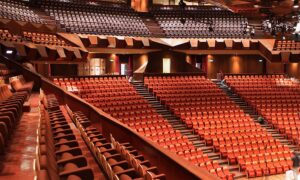 Uncover the importance of acoustics in stadium seating design. Discover how the configuration of seats and the use of sound-absorbing materials can improve sound distribution, ensuring that spectators can hear the event’s audio clearly, including commentary, music, and crowd noise.
Uncover the importance of acoustics in stadium seating design. Discover how the configuration of seats and the use of sound-absorbing materials can improve sound distribution, ensuring that spectators can hear the event’s audio clearly, including commentary, music, and crowd noise.
Seat Materials and Comfort
Understand the science behind the selection of arena seating materials and their impact on comfort. From breathable fabrics to cushioning materials, seating components are chosen to provide adequate support, temperature regulation, and durability for a pleasant seating experience.
Human Factors and Crowd Behavior
Explore how the science of human factors and crowd behavior influences stadium seating design. Understanding human behavior, movement patterns, and preferences helps determine factors like aisle widths, seating capacity, and crowd flow management, ensuring a safe and enjoyable experience for all spectators.
Technology Integration in Seats
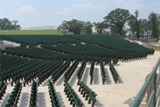 Discover how technology is incorporated into stadium seating to enhance the spectator experience. From seat-back screens for real-time replays to interactive features and connectivity options, technological advancements offer additional layers of engagement and entertainment for spectators.
Discover how technology is incorporated into stadium seating to enhance the spectator experience. From seat-back screens for real-time replays to interactive features and connectivity options, technological advancements offer additional layers of engagement and entertainment for spectators.
Accessibility and Inclusive Design
Learn about the science behind inclusive design in stadium seats. Discover how seating arrangements are designed to accommodate individuals with physical handicaps or restricted mobility, guaranteeing that everybody can appreciate the event comfortably and equally.
Continuous Improvement and Future Innovations
Explore ongoing research and advancements in stadium seating design. From exploring new materials and technologies to incorporating data analytics and user feedback, the science behind arena seating is continually evolving to enhance the overall spectator experience.
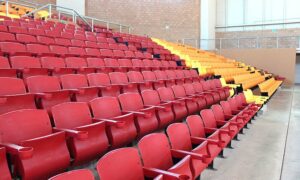 Conclusion
Conclusion
The science behind stadium seating goes far beyond mere aesthetics. Through the application of ergonomic principles, sightline optimization, acoustics, seating materials, and considerations for human factors and technology integration, stadium seats are designed to enhance both comfort and visibility. As the science continues to advance, stadiums are poised to provide even more immersive and enjoyable experiences for spectators, making every event a truly memorable one.



